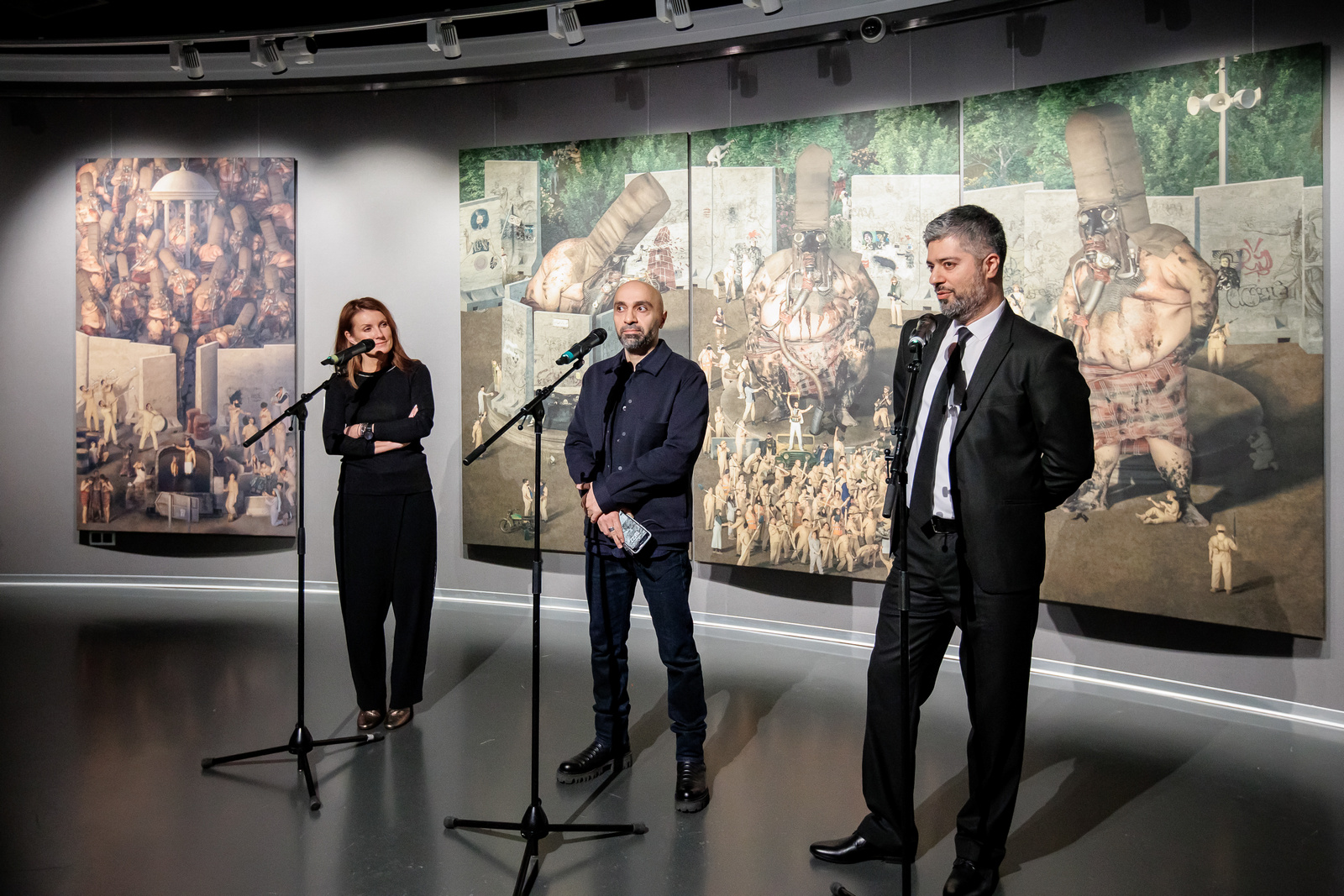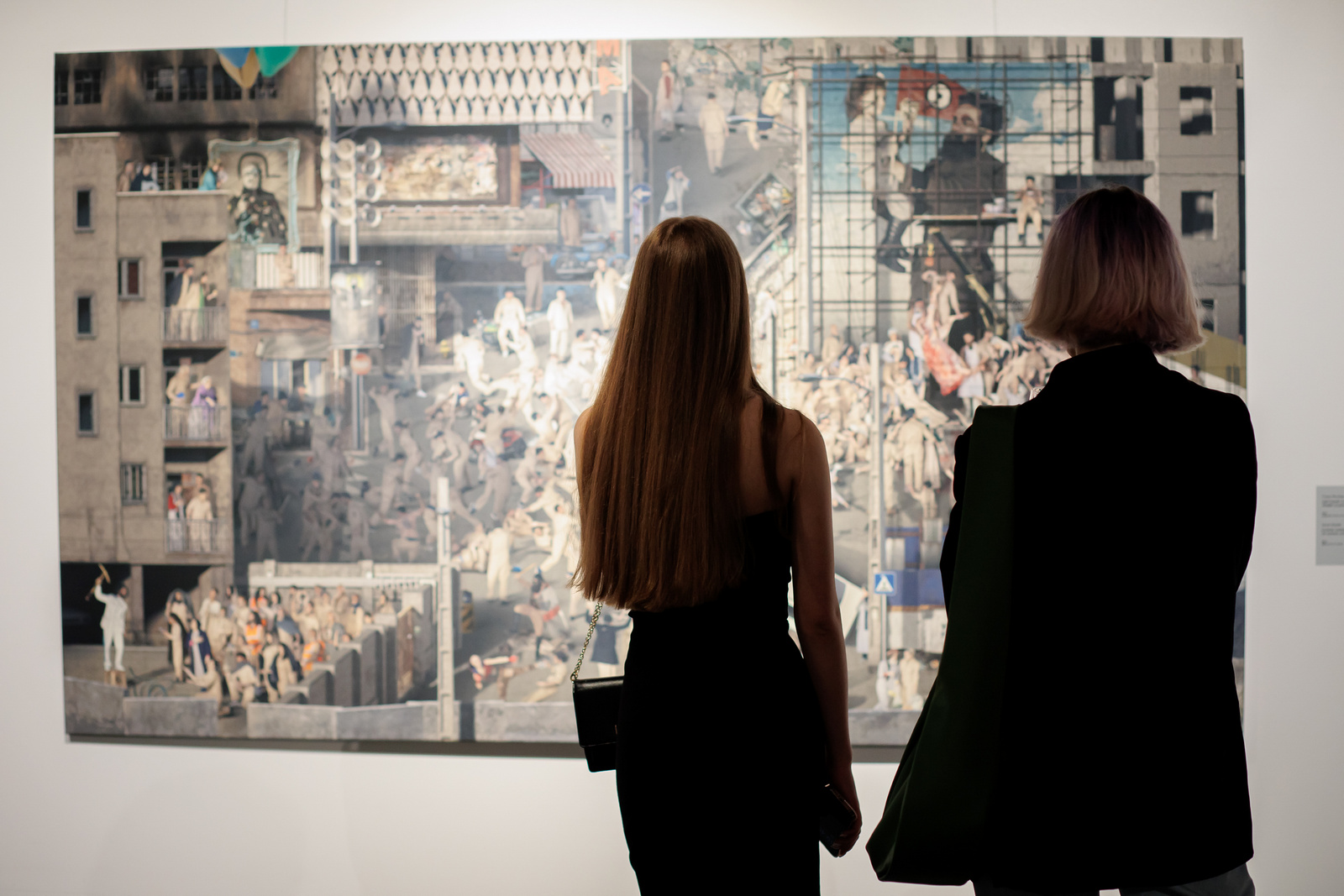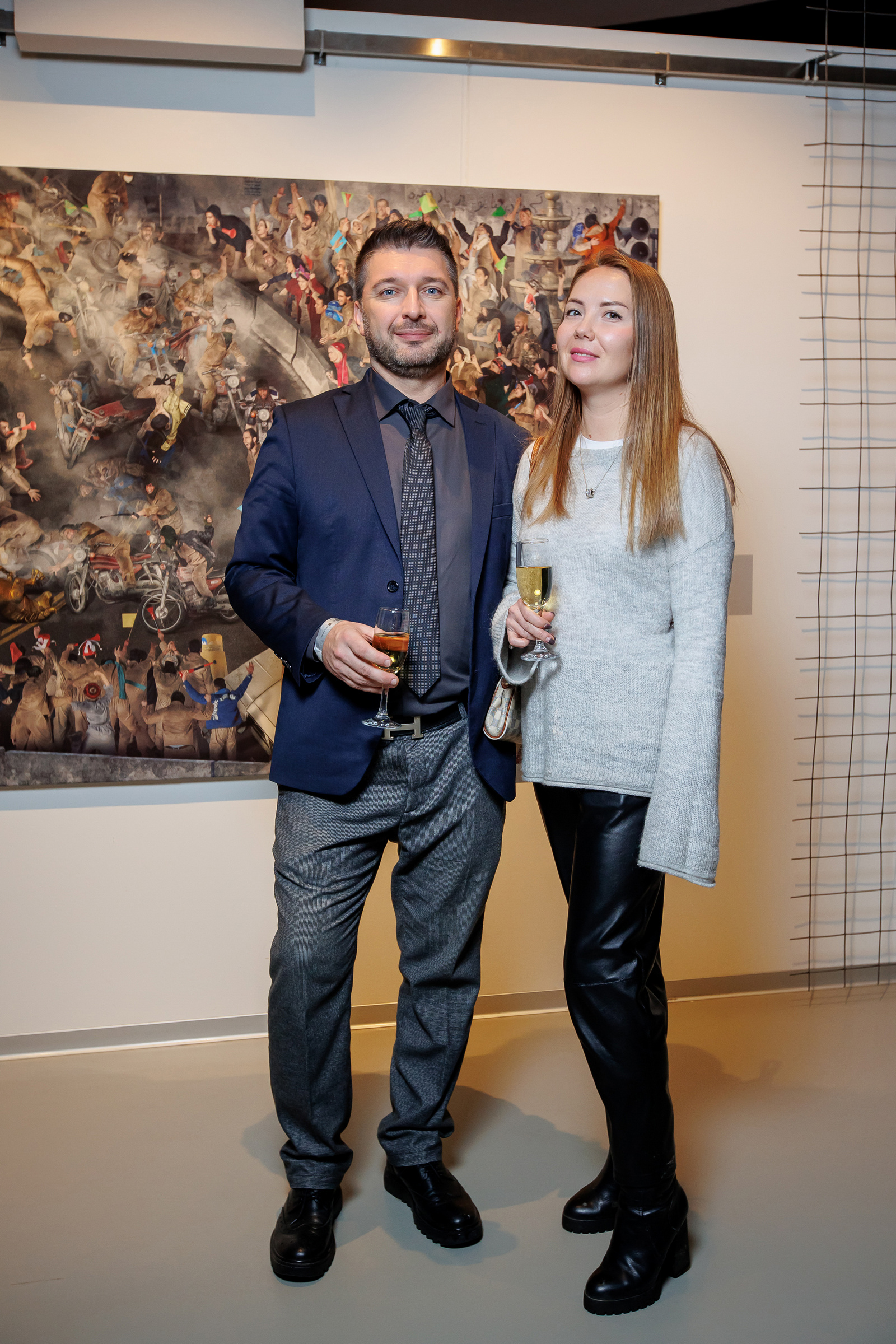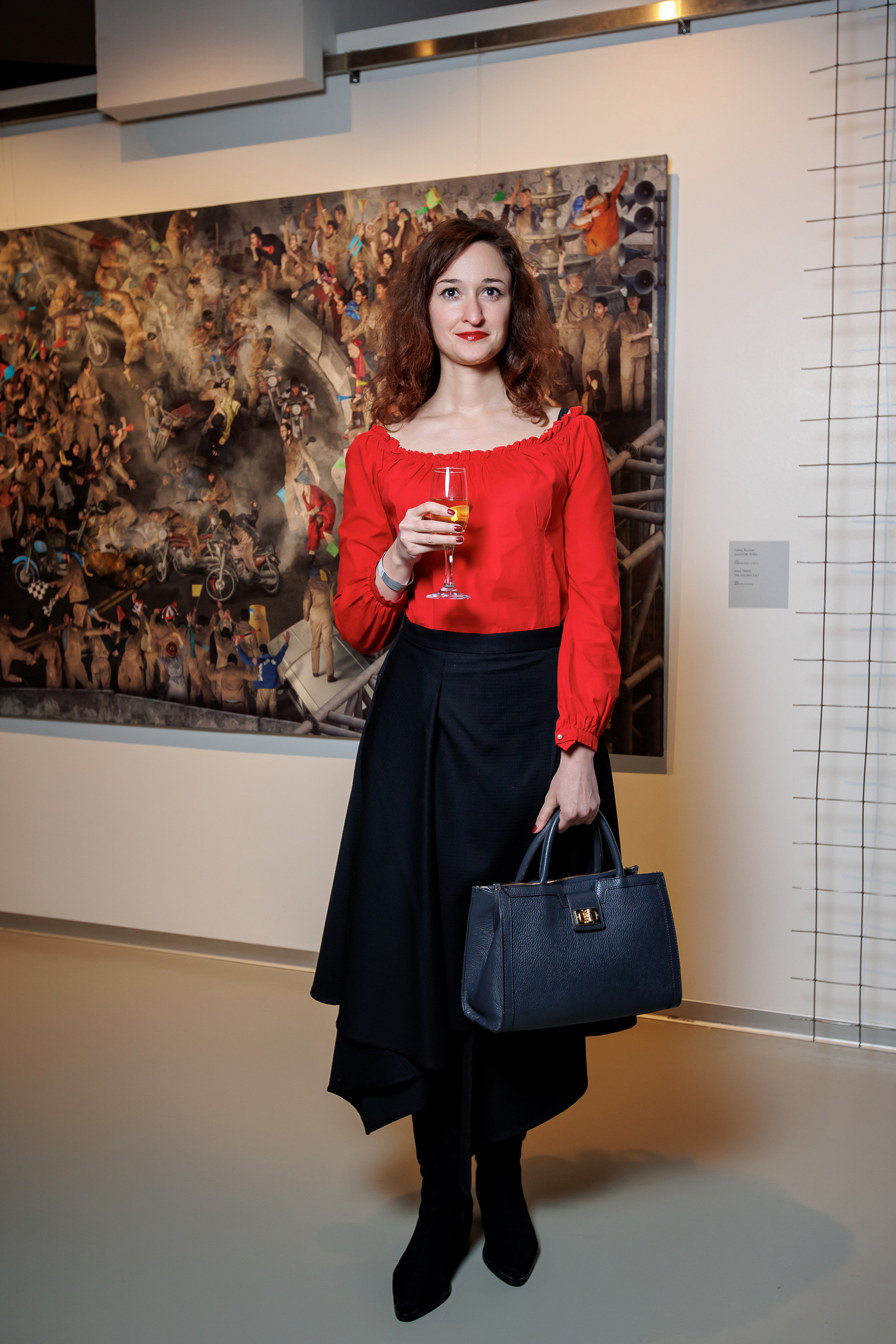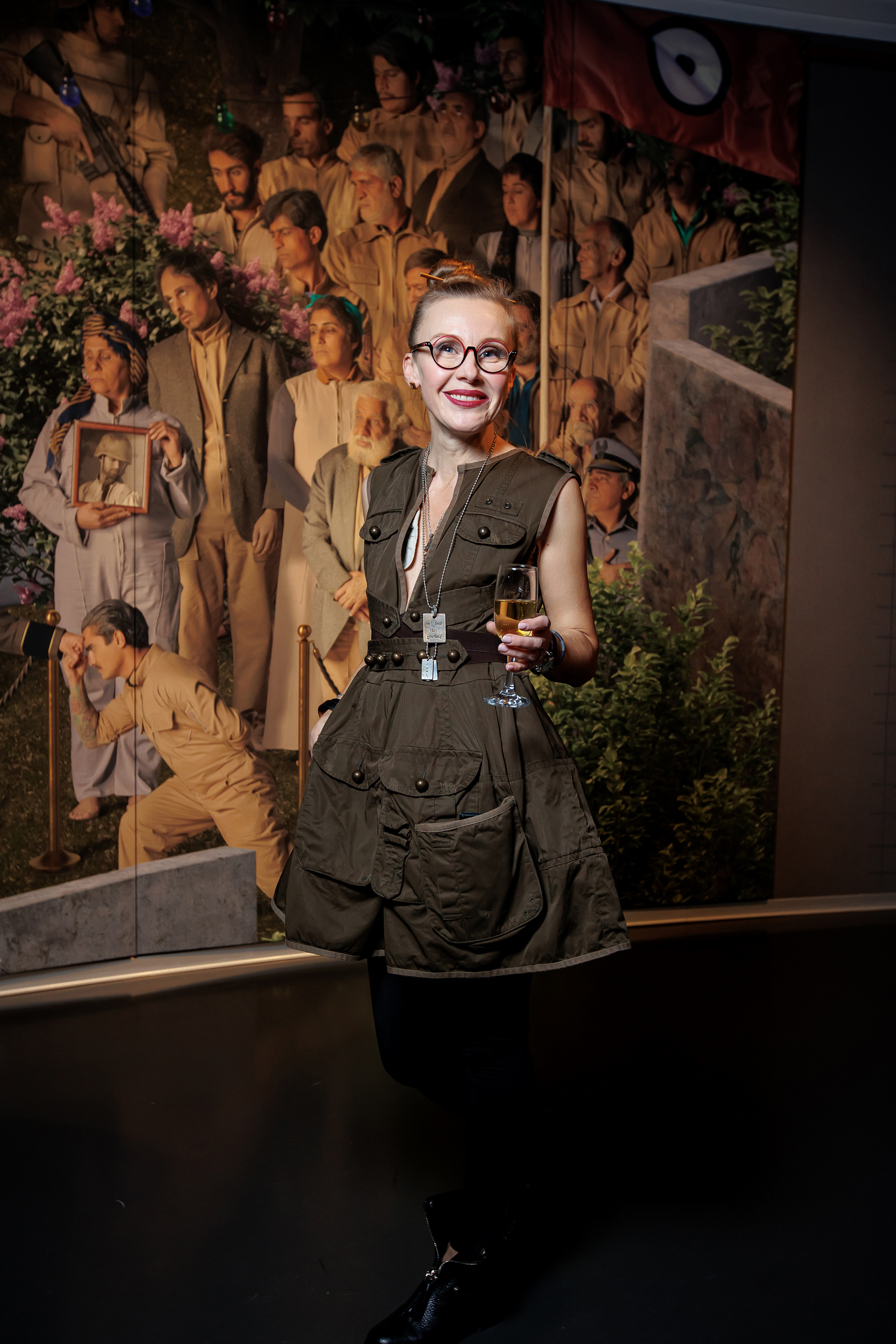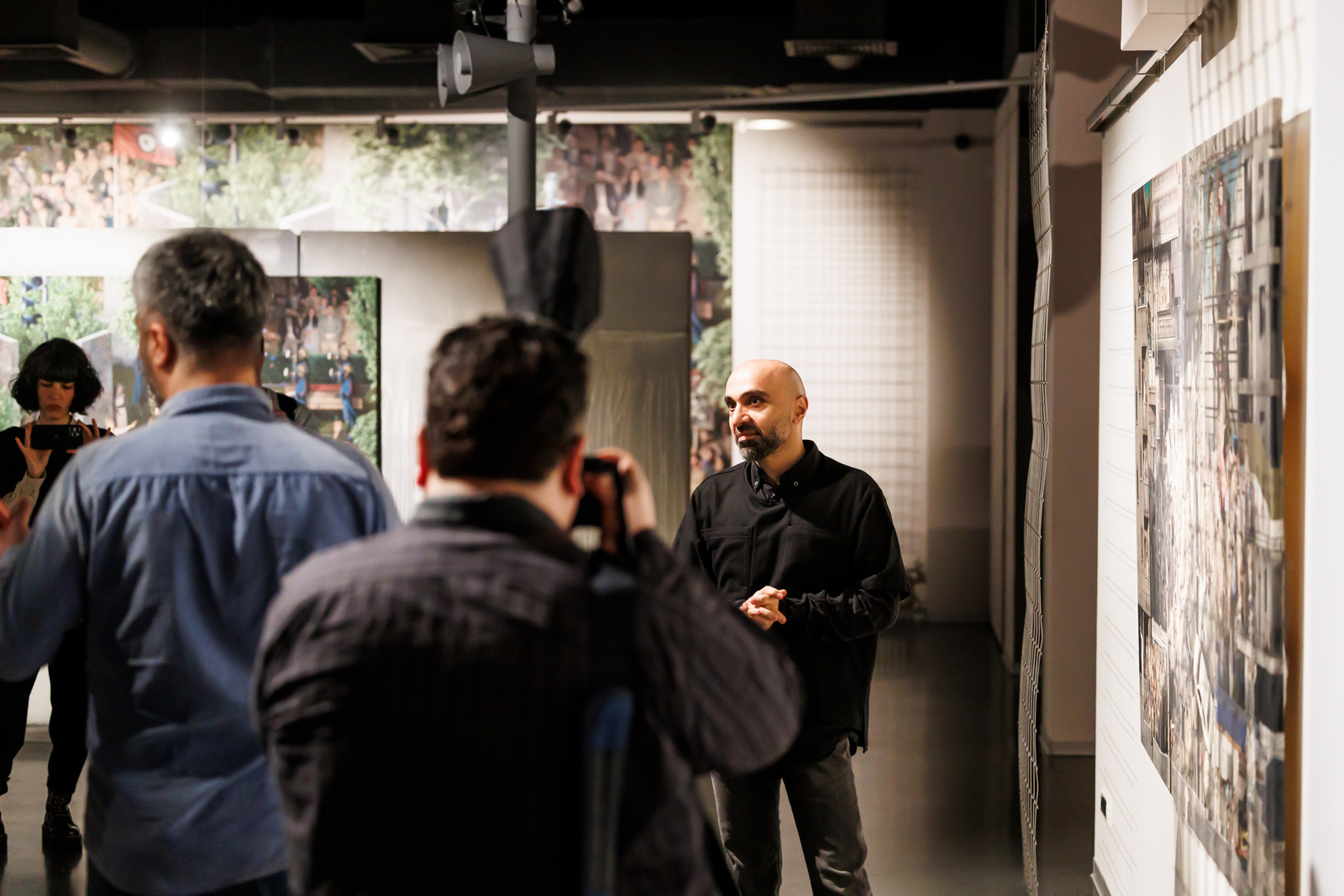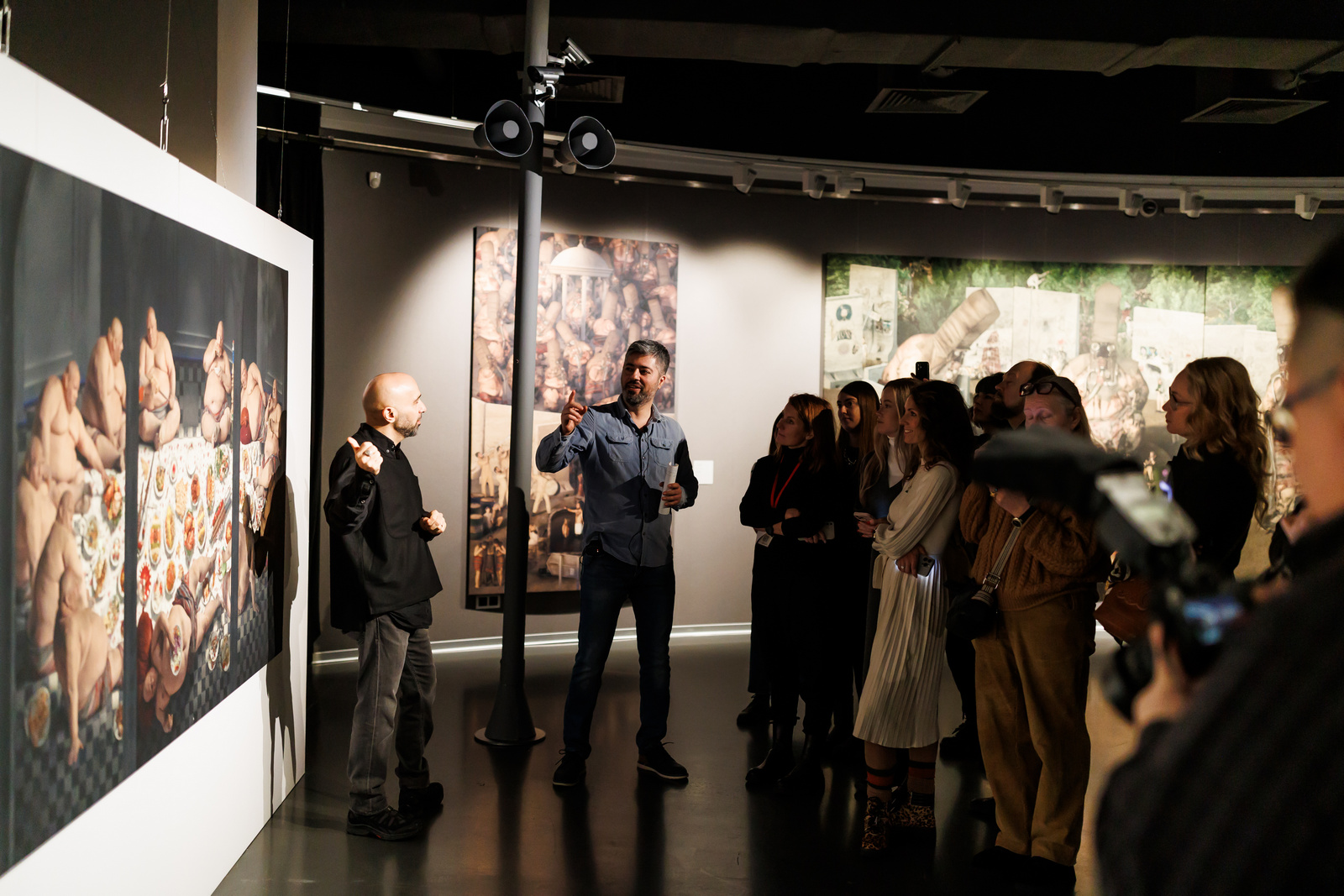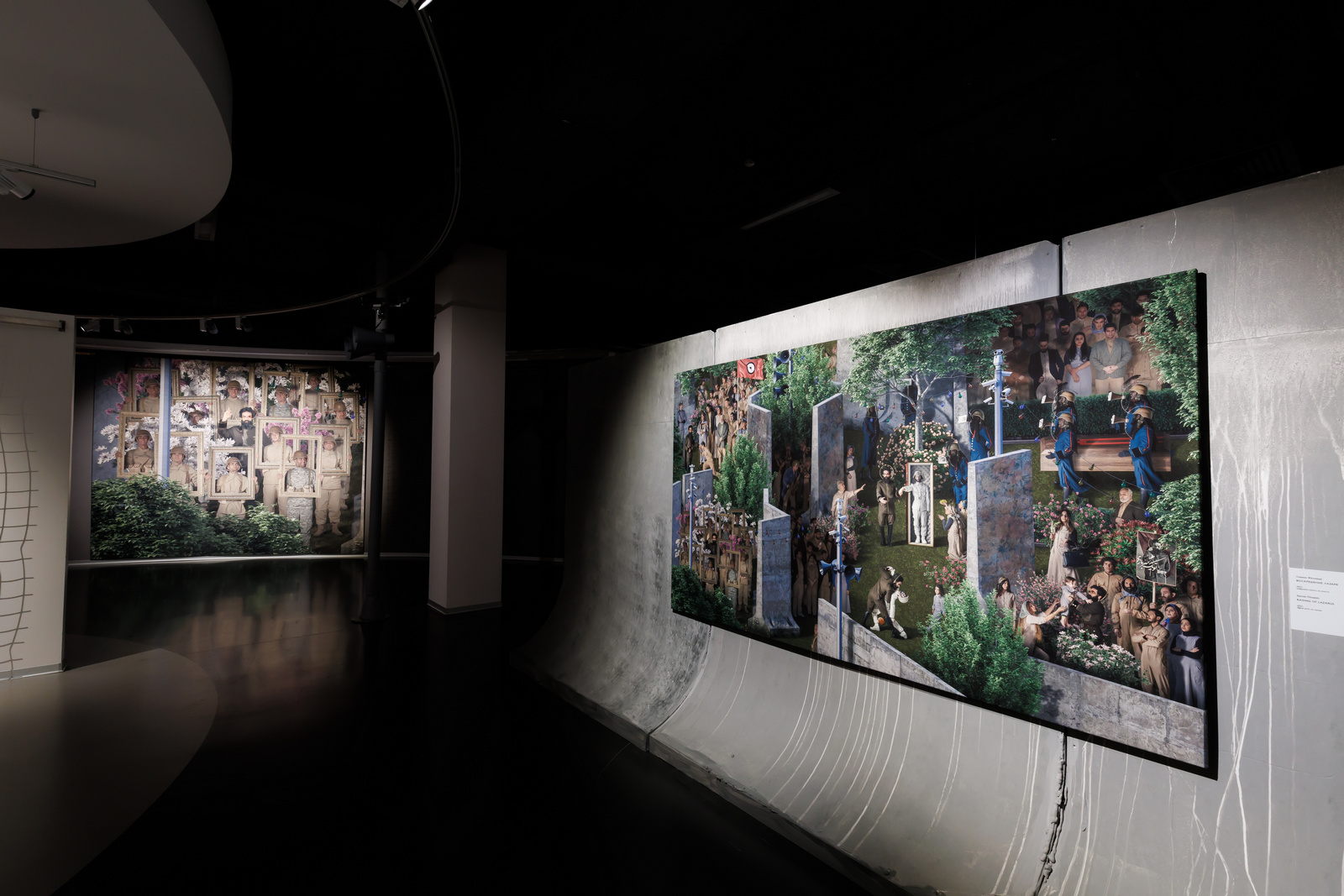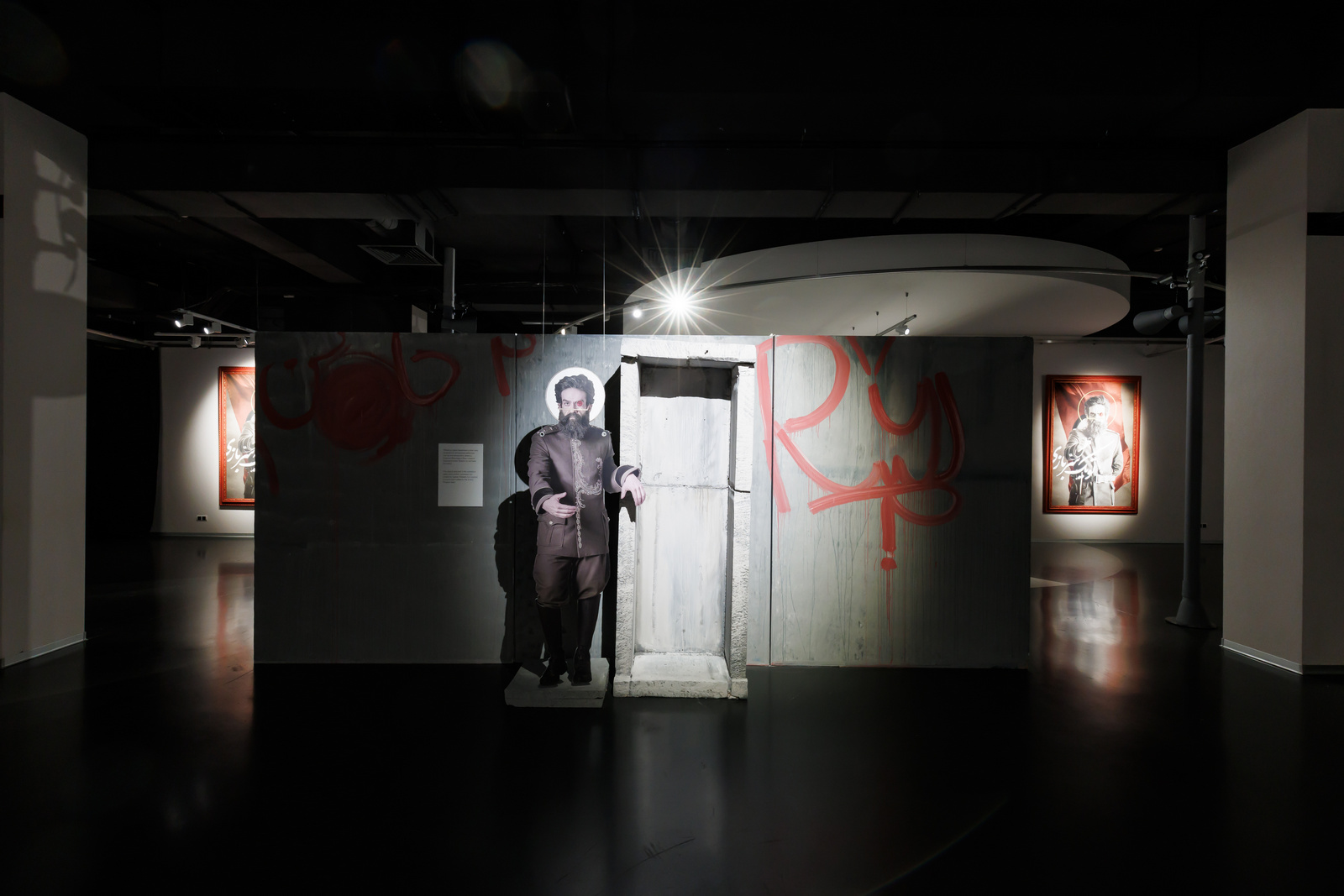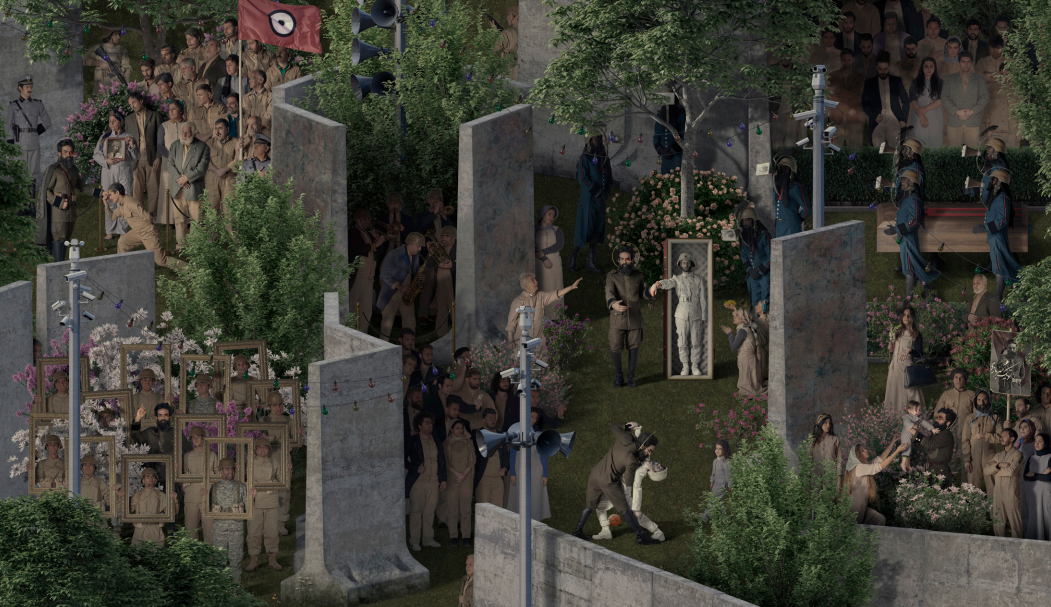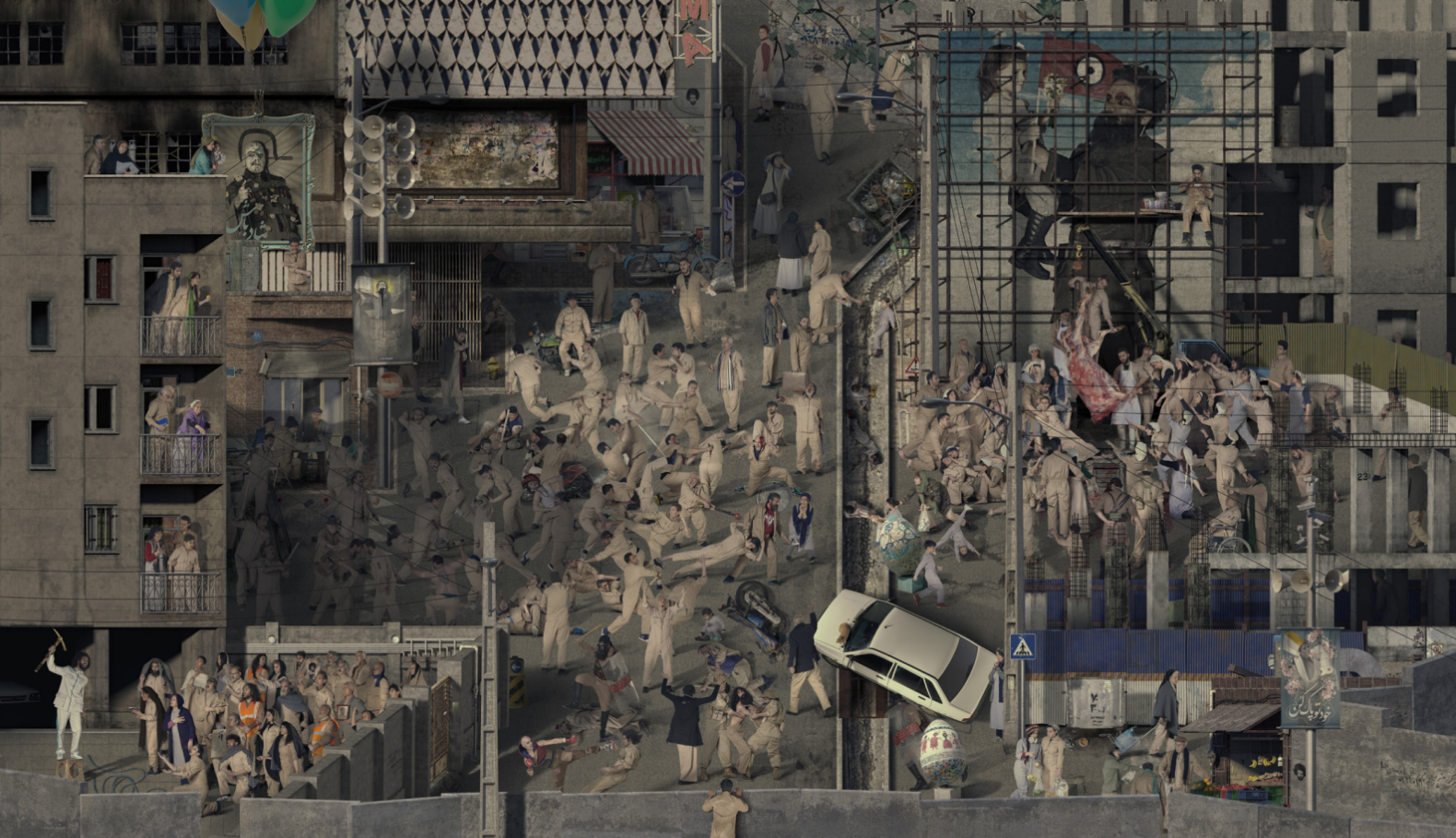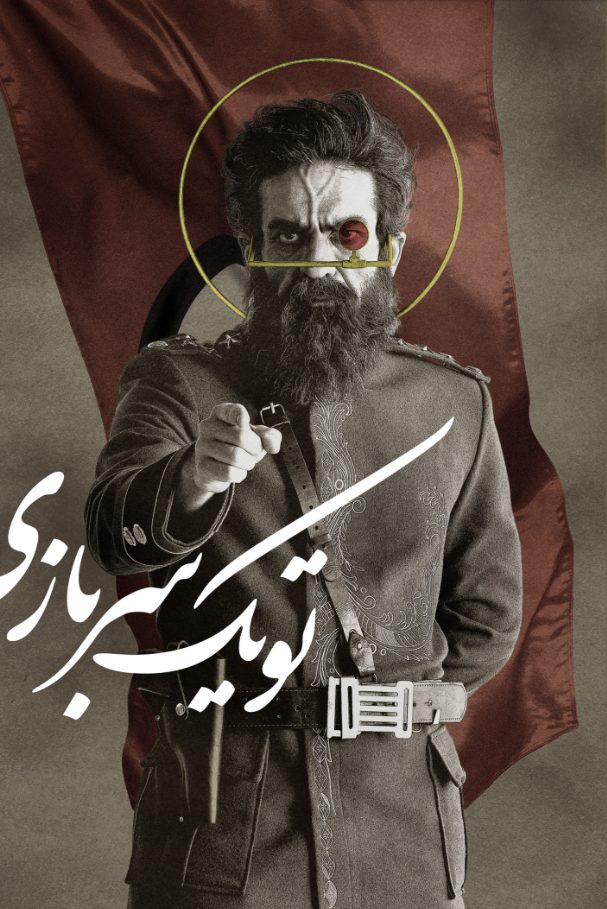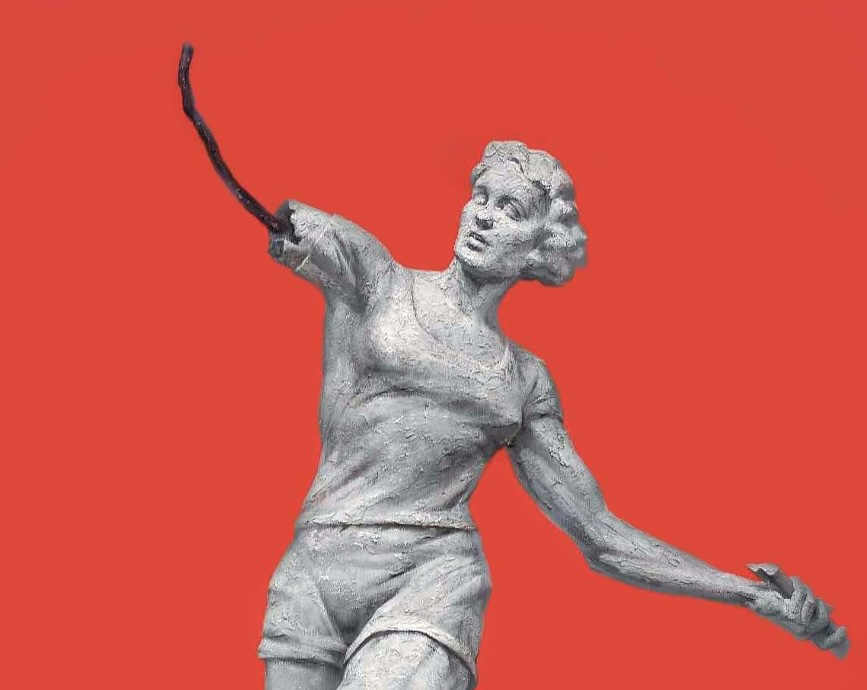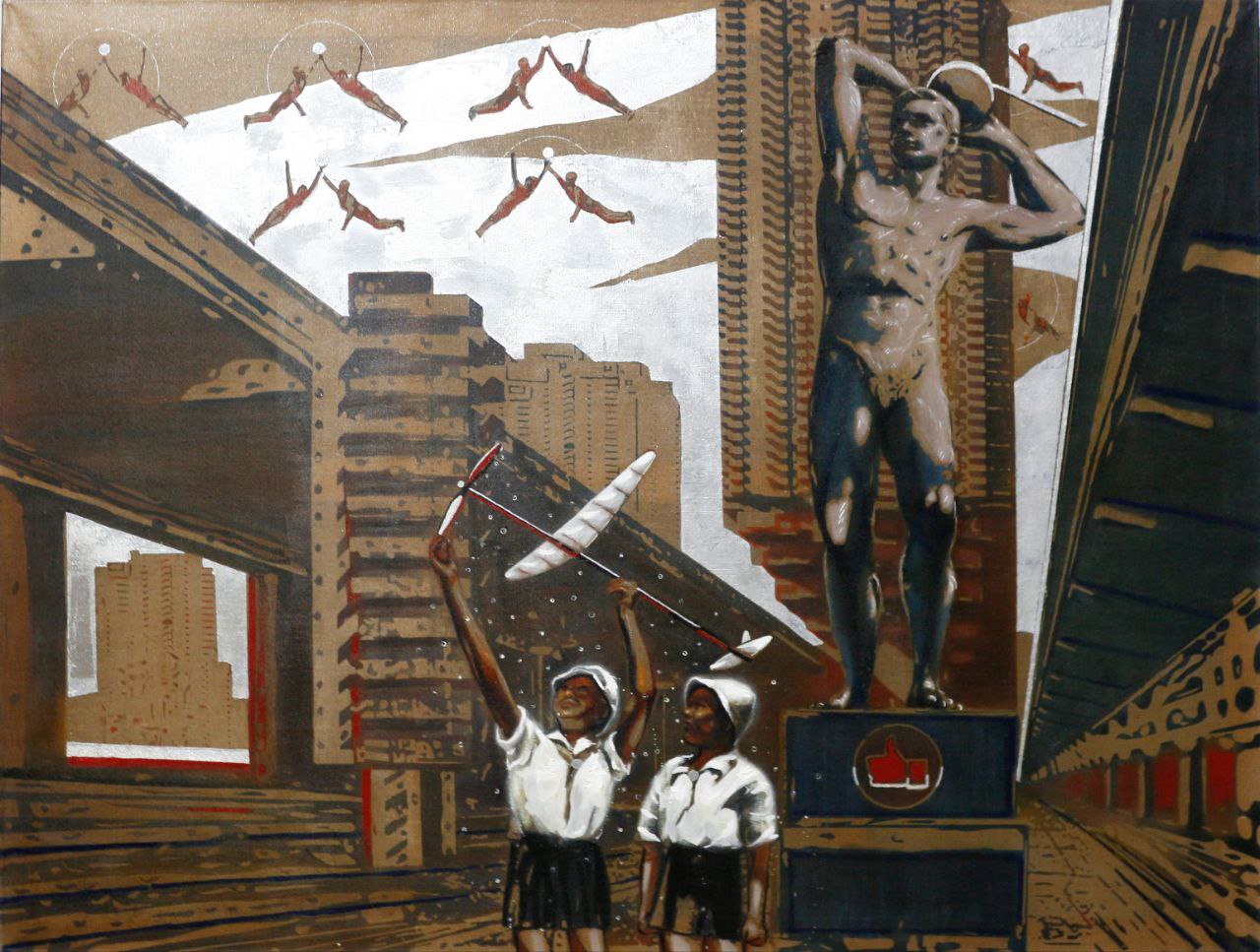Erarta Museum of Contemporary Art presented an exhibition by the Iranian artist Siamak Filizadeh whose truly theatrical artworks feature all currently relevant narratives unfolding simultaneously
There Is No Such Thing as a Big Story encapsulates Siamak Filizadeh’s dedicated efforts over the recent years to deconstruct and disentangle the overarching narratives of history. Beginning with the Underground project and culminating in his current work, Filizadeh meticulously unravels historical narratives, blurring the lines between past and present and between fantasy and reality.
‘All of these images, collages, individuals, and scenes stem from my own sense of confusion. Through this exhibition, I aim to convey my feelings of disconnection and bewilderment, inviting viewers to engage with these narratives and ponder: do you share in my confusion?
The overlapping layers and concurrent narratives in these montages are not mere fantasies or legends but rather reflections of our contemporary world. The tales within this project feel both distant and intimately close to me. Narratives from the Torah and the Quran unfold on the streets of a seemingly fictional city, a city that feels both remote and familiar. Perhaps this is our very own Tehran.
Oil guzzler, commander, saviour, clown – each represents my whimsical and imaginative connection with the city and society I inhabit. It feels as though I can only exist by portraying this worn-out society’s intricate, multifaceted layers. Have you felt the same disquiet as I do?
Everything lies within these nuances: the grain of concrete walls, the hue of garments, flushed countenances, moments of dread and celebration, and the myriad of meticulously chosen and photographed miniatures. They coalesce to form a narrative. It’s not about a grand tale; these seemingly trivial details, which emerged from grand narratives, now tell stories suspended between reality and fiction, belonging neither here nor there.
Perhaps every inhabitant of this city can be likened to the builders of the Tower of Babel, who aspired to touch the divine. While the Tower of Babel no longer stands, the quest to connect with God endures. Could it be that every city signifies this pursuit of the divine? We’re familiar with the tale of Babylon – that in striving for God’s stature, our languages were confounded and communication shattered. My narrative is yet another chronicle of aspiring for the divine and facing its consequential curse.
This time, the tower stands tall. Its pinnacle is lost in the vast sky’s expanse, seemingly touching the divine. It even boasts a parking lot. God refrained from cursing or confounding languages on this occasion. Yet, even with a shared language, the city’s inhabitants found understanding each other elusive. Perhaps God deemed our narrative too straightforward. How might we escape this profound chasm? A golden pickaxe was forged to bring down the tower. A skyscraper teeming with offices and hubs for the commander, from where he relayed tales of his divine encounters. Will a redeemer emerge? The grand narrative is an illusion.’
— Siamak Filizadeh
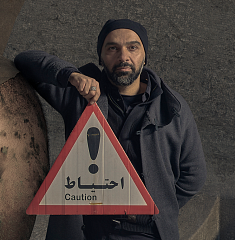
Siamak was born in 1970 in Tehran. He received his high school diploma in Art in 1990 and graduated from the Tehran Azad University with a BA degree in Graphic Design in 1995. From 1988, Siamak started his career as a graphic designer, working in different fields of design, advertising, branding, and visual arts. He has worked as art director and graphic designer for a number of large institutions and international festivals and received numerous poster and book design prizes. After his successful exhibition of 2008, Rostam II – The Return, Filizadeh concentrated his efforts on his artistic practice. His works are in the collections of the Los Angeles County Museum (LACMA, Los Angeles, California, US), Metropolitan Museum of Art (NYC, US), as well as in various private collections worldwide. He lives and works in Tehran.



